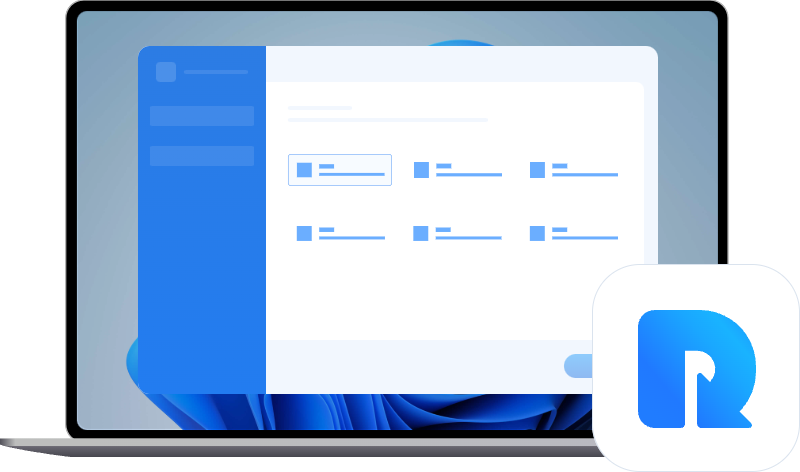iCare Data Recovery Review: Free Recovery in 2024
This iCare Data Recovery review will introduce detailed information about the data recovery software. If it cannot satisfy your needs, you can consider the alternative we provide.
In the realm of data loss, whether caused by accidental deletion, device malfunctions, OS glitches, or various mishaps, file recovery software has emerged as an assistant. These software solutions come in all types, each offering a different level of efficacy. Among these, iCare Data Recovery is our current focus, a long-standing data retrieval tool with reasonable rescue capabilities.
iCare Data Recovery is a resource-efficient and user-friendly program, making it an appealing choice, especially for those reluctant to invest in data recovery. While it manages to recover data reasonably well, it falls short in terms of aesthetics with an outdated user interface and a slightly sluggish scanning speed. Despite these hiccups, it's a commendable option when considering its free version.
For further information about it, please read the following part. This iCare Data Recovery review will tell you.
Explore Key Features of iCare Data Recovery
While not the most renowned data recovery solution, iCare Data Recovery does have a free version, making it appealing to budget-conscious users. Developed by iCareALL, a company in operation since 2009, they initially focused on creating data recovery for SD cards and other storage media. However, their repertoire now extends to various other utilities, including file converters and editors.
The latest iteration, version 8.3, was introduced in late 2020. It's worth noting that no significant updates have been made since then, which is less than ideal. Now, let's delve into the software's standout features.
Data Recovery
iCare Data Recovery isn't the absolute best in terms of data retrieval, but it gets the job done for the most part. It can restore over 600 file types, encompassing videos, images, audio files, and numerous office document formats, across a wide array of storage media. There are two free versions: iCare Recovery Free, which provides unlimited data recovery (with some limitations), and iCare Pro Free, which allows deeper scans and deleted/RAW drive recovery but caps at 1 GB before requiring an upgrade.
Portable Version
iCare Data Recovery offers a low-profile portable version in the form of a ZIP file, sparing you the hassle of installation and uninstallation. This can be easily transferred to a USB drive for on-the-go recovery. Alternatively, an installer is also available for those who prefer it.
File Preview
Upon reaching the results screen, you can preview potentially recoverable files, saving you the trouble of restoring files that may not be what you're looking for. However, the range of previewable file types is somewhat limited, a common trait among recovery programs. Additionally, the recoverable files are displayed in a thumbnail view for easy identification.
Save Session
Data recovery scans can be time-consuming, especially with large storage media and slower read speeds. iCare Data Recovery allows you to save your scanning progress, preventing the need to start over on future attempts. This feature saves precious time.
The Process of File Recovery with iCare Data Recovery
In this iCare Recovery review, we acquired the iCare Data Recovery Free version, opting for the portable edition to avoid installation hassles. The program is quite straightforward, but we've prepared a step-by-step guide for your convenience. Follow these instructions, and you'll be on your way to recovering your files swiftly.
1. Download either the installable or portable version of iCare Data Recovery from the official website.
2. Upon launching the program, choose between "Deleted File Recovery" and "Advanced File Recovery."
- Deleted File Recovery: Designed for recovering files deleted from your Windows OS, including those emptied from your Recycle Bin.
- Advanced File Recovery: A deeper scan for a broader range of data loss scenarios.
It is advisable to select "Advanced File Recovery," which takes you to a screen where you pick the storage medium to scan. Once chosen, highlight the drive and click "Next."
3. Once the scan is finished, choose the partition for recovery and click "Next."
4. On the next screen, simply locate the files you wish to recover, highlight them, and click "Recover." The interface resembles Windows Explorer, facilitating navigation. You can also preview files and search based on file name and other criteria.
5. A pop-up window appears, prompting you to select a location for storing the recovered files. This location should be on a different storage medium than the one you're recovering from. After selecting a folder, click "OK" to proceed.
Best Alternative to iCare Data Recovery
For those who find iCare Data Recovery less effective, you can choose an iCare Data Recovery alternative from many tools.
MyRecover serves as a robust alternative, renowned for its reliability in Windows data recovery. MyRecover excels in its powerful recovery capabilities and user-friendly interface, receiving accolades for its speed and high success rates across a variety of file types.
📍 Key Features:
Supports 200+ file types
Addresses multiple data loss scenarios
Offers Quick and Deep Scans
Provides file filtering and preview
Preserves original file names and formats
👍 Pros:
High success rates and fast speed
Free recovery of up to 500MB
Affordable pricing with multiple recovery functions
30-day money-back guarantee
👎 Cons:
Not compatible with Mac
✔ Pricing
MyRecover Pro: $39.95
MyRecover Technician: $99.00
Use the Premier Alternative to iCare Data Recovery
To benefit from MyRecover, a leading Windows data recovery software, begin by downloading it for free. Follow the step-by-step guide outlined in the following section to recover lost files safely.
Step 1. Install and launch MyRecover. Hover the mouse over the drive saved deleted files before, and click Scan.
Step 2. Upon clicking "Start Scan," MyRecover automatically performs both Quick Scan and Deep Scan to identify all recoverable files on your selected drive. During the scan, you can filter results by size, path, date modified, and more to pinpoint specific files for recovery.
Step 3. A list of data found by MyRecover will appear. Choose the files you wish to recover, and click "Recover x files." The "Recover" button displays the number of selected files and their total size, allowing you to review them before restoration.
Written in the End
iCare Data Recovery stands out for its unrestricted free version and user-friendliness. While its data recovery success rate is decent, there are better alternatives available. The primary drawback lies in its outdated interface, which is long overdue for an update. You can try MyRecover mentioned in the review to recover deleted files from hard drives with ease.


